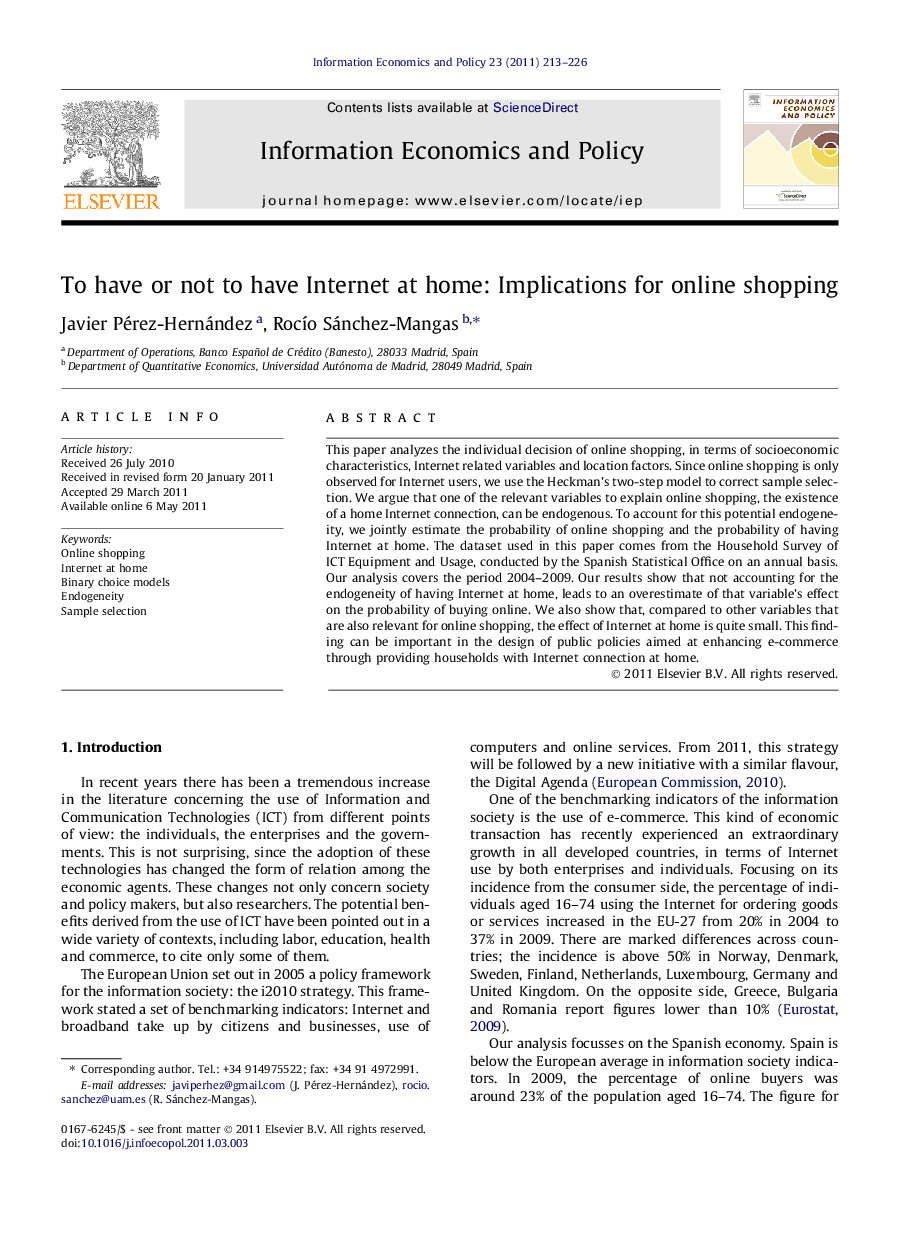| Article ID | Journal | Published Year | Pages | File Type |
|---|---|---|---|---|
| 5075744 | Information Economics and Policy | 2011 | 14 Pages |
This paper analyzes the individual decision of online shopping, in terms of socioeconomic characteristics, Internet related variables and location factors. Since online shopping is only observed for Internet users, we use the Heckman's two-step model to correct sample selection. We argue that one of the relevant variables to explain online shopping, the existence of a home Internet connection, can be endogenous. To account for this potential endogeneity, we jointly estimate the probability of online shopping and the probability of having Internet at home. The dataset used in this paper comes from the Household Survey of ICT Equipment and Usage, conducted by the Spanish Statistical Office on an annual basis. Our analysis covers the period 2004-2009. Our results show that not accounting for the endogeneity of having Internet at home, leads to an overestimate of that variable's effect on the probability of buying online. We also show that, compared to other variables that are also relevant for online shopping, the effect of Internet at home is quite small. This finding can be important in the design of public policies aimed at enhancing e-commerce through providing households with Internet connection at home.
âºThis paper analyzes the effect of having Internet at home on online shopping. ⺠We use Spanish data on ICT household equipment and usage, for the period 2004-2009. ⺠We account for sample selection of Internet use and endogeneity of Internet at home. ⺠Under exogeneity, the effect of Internet at home on online shopping is overestimated.
